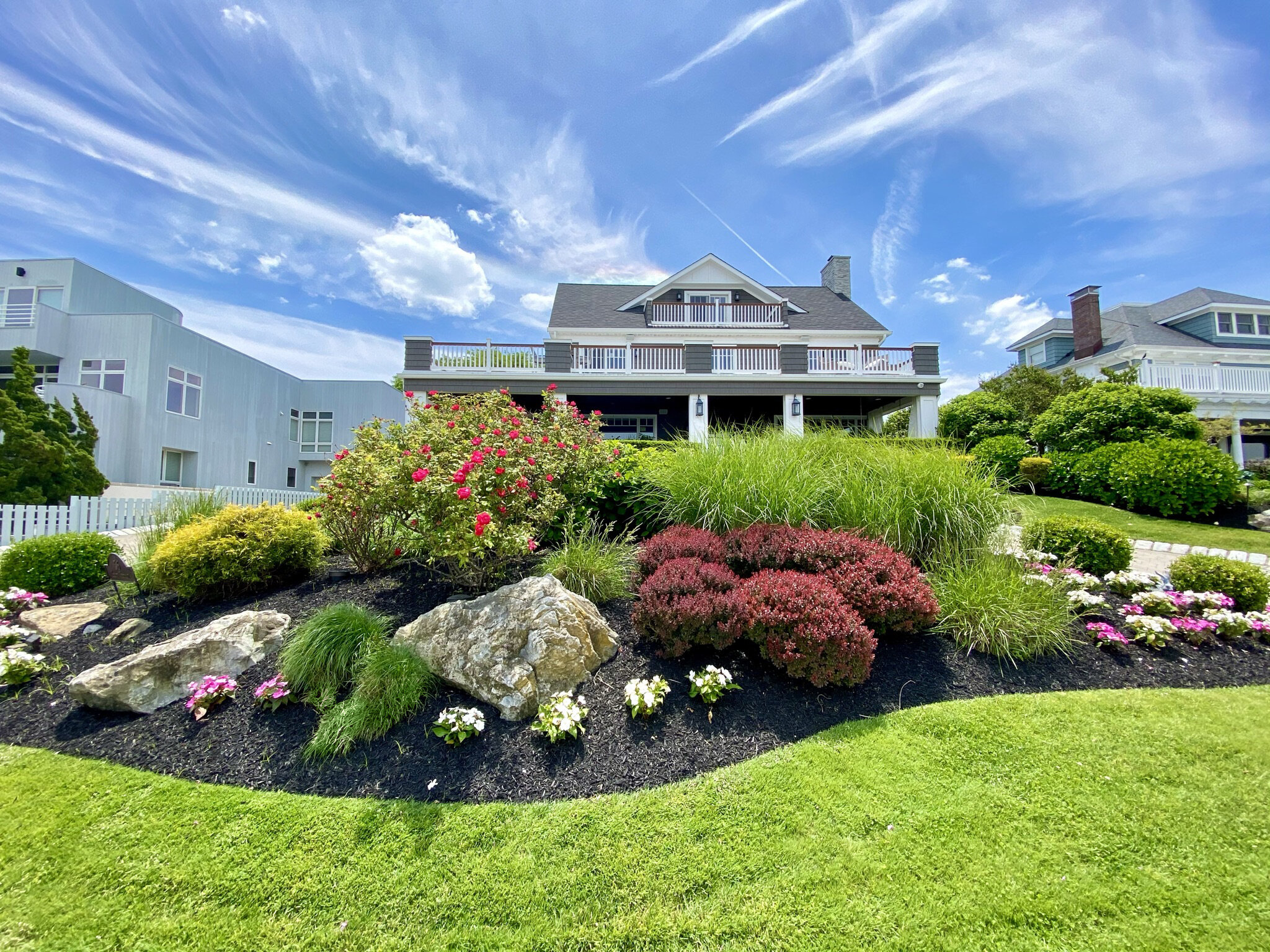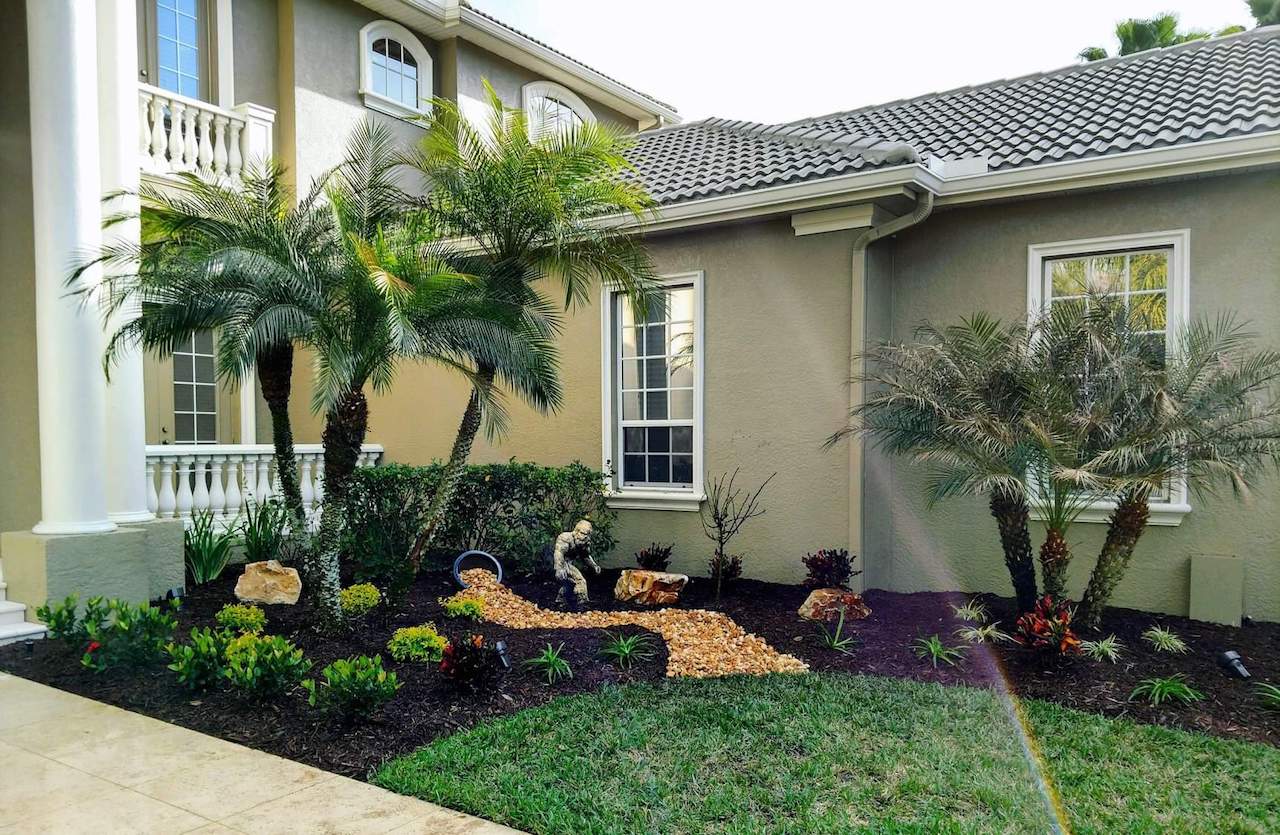A Comprehensive Overview to Creating and Implementing Effective Landscape Design Solutions
The art and science of landscaping extend past mere appearances; they entail a thoughtful combination of style principles, ecological stewardship, and functional application. A comprehensive overview to efficient landscaping solutions starts with a thorough understanding of your outdoor room, stressing the significance of proportion, equilibrium, and unity. As we explore lasting techniques and the option of proper flora, the implications for biodiversity and neighborhood well-being come to be progressively evident. What approaches can one utilize to ensure these landscapes not just flourish however also grow attuned to their environments?

Understanding Landscape Layout Concepts
One may wonder what fundamental elements add to efficient landscape design. At its core, effective landscape design rests on a number of key concepts that guide the setup and selection of components within an area. These concepts include unity, rhythm, proportion, and equilibrium, each serving to produce a harmonious outside environment.
Unity describes the cohesive connection amongst different parts, making sure that they collaborate cosmetically and functionally. Balance can be accomplished via in proportion or unbalanced setups, allowing the landscape to really feel secure and inviting. Percentage entails recognizing the scale of components in connection with each various other and the surrounding environment, promoting visual harmony and comfort.

Examining Your Outdoor Area
Prior to executing the principles of landscape style, a complete analysis of your outside space is important. This initial assessment assists define the extent of your landscape design task and ensures that your design lines up with the distinct features of your residential property. Begin by evaluating the measurements of your room, taking exact dimensions to recognize the available location for different aspects such as gardens, paths, and patio areas.
Following, observe the existing functions of your landscape, including topography, dirt top quality, and water drainage patterns. These factors substantially influence plant selection and positioning. Additionally, evaluate the sunshine direct exposure across various areas throughout the day, as this will affect the kinds of plants that grow in your yard.
Consider the microclimates produced by structures, trees, and other barriers, as they can influence temperature level and wetness levels. Take note of any kind of existing plants or hardscape aspects that you wish to preserve or eliminate. This thorough examination lays the groundwork for a efficient and educated landscaping solution, making certain that your design is not only visually pleasing yet sustainable and likewise functional for years to find.
Sustainable Landscape Design Techniques
These methods not just advertise ecological balance however additionally enhance the aesthetic and practical worth of a landscape. Implementing effective watering systems, such as drip watering, minimizes water waste and guarantees that plants get appropriate dampness (Palm Desert Landscaping).

Another efficient method is the strategic positioning of trees and bushes to provide natural windbreaks and shade, hence reducing power costs (Palm Desert Landscaping). Rainfall yards can be integrated right into the landscape design to handle stormwater drainage efficiently, filtering contaminants prior to they enter waterways
Selecting the Right Plant Kingdoms
Selecting the right plants for your landscape is critical to accomplishing both visual appeal and eco-friendly harmony. The process starts with an understanding of your local environment, soil problems, and the specific microenvironments within your landscape. Analyzing elements such as sunshine direct exposure, moisture degrees, and existing flora will assist you pick plants that flourish in your special setting.
Take into consideration including indigenous plants, as they are well-adapted to neighborhood problems, call for much less upkeep, and assistance go neighborhood wildlife. Additionally, selecting a diverse array of species can boost biodiversity while reducing the threat of condition and parasite episodes. It is important to review the development routines, flowering durations, and seasonal colors of prospective plants to create a cohesive and vibrant landscape.
Moreover, believe regarding the meant use of the area; for instance, if the area will certainly experience high foot web traffic, choose for durable ground covers. By thoughtfully choosing plants that straighten with both your visual objectives and environmental needs, you can create a lasting landscape that not just improves your building yet likewise Get the facts contributes favorably to the surrounding ecological community.

Execution and Maintenance Methods
Once the appropriate plants have been chosen for your landscape, the emphasis changes to efficient implementation and continuous upkeep strategies. Successful setup begins with proper website preparation, which includes soil testing to establish nutrient levels and pH, adhered to by changing the dirt as required. Thoroughly set up plants according to their development routines and light needs, ensuring sufficient spacing to advertise healthy and balanced development.
Watering is a crucial component of implementation. Establish a watering schedule that thinks about the particular needs of each plant species, readjusting for seasonal adjustments. Making use of drip irrigation systems can enhance water performance and reduce runoff.
Maintenance strategies must be implemented to ensure the longevity and vigor of your landscape. Normal jobs include weeding, mulching, and pruning to control development and protect against condition. Fertilizing must be carried out based on soil examinations, giving the needed nutrients without over-fertilizing.
Monitoring for parasites and diseases is important; early discovery can protect against substantial damages. Seasonal modifications to maintenance routines, such as preparing and winterizing perennials for springtime growth, will ensure that your landscape continues to be visually appealing and healthy and balanced year-round.
Final Thought
In conclusion, reliable landscaping solutions need a complete understanding of design concepts, precise assessment of outside rooms, and this post the application of sustainable strategies. The choice of appropriate plant varieties plays an important role in improving visual charm and eco-friendly resilience - Palm Desert Landscaping. Effective execution and continuous upkeep even more make certain the longevity and vigor of landscapes. By incorporating these elements, landscapes can be changed right into stunning, functional atmospheres that advertise biodiversity and contribute favorably to area well-being.
One may wonder what fundamental components contribute to effective landscape style. At its core, effective landscape style pivots on numerous key principles that assist the setup and choice of aspects within a room.Picking the right plants for your landscape is essential to accomplishing both aesthetic allure and ecological harmony. It is important to assess the growth routines, flowering durations, and seasonal colors of prospective plants to produce a vibrant and natural landscape.
When the ideal plants have actually been selected for your landscape, the emphasis changes to reliable execution and continuous upkeep approaches.